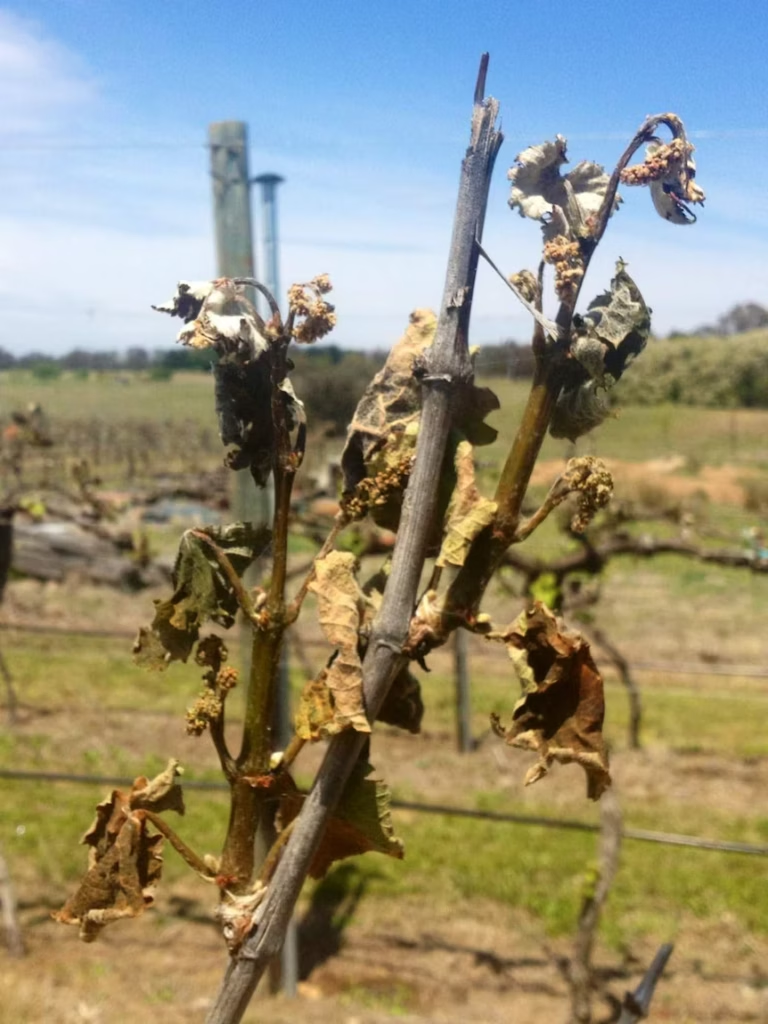The Riverina, Australia’s second-largest wine-growing region, has long been a powerhouse in the global wine industry, exporting more than 12 million cases of wine each year. However, its prominence in the sector is now at risk, with troubling signs of decline according to industry experts. In recent years, both economic factors and extreme weather events have severely impacted the region, leading to a dramatic shift in its wine production capabilities.
Declining Vineyards and Grower Numbers in the Riverina
As of three years ago, the Riverina boasted 22,000 hectares of vineyards and 275 independent grape growers. However, these figures have now dropped to under 19,000 hectares and just 225 growers. Reflecting a significant reduction in the region’s production capacity. According to Riverina Winegrape Growers CEO Jeremy Cass, these losses are not only a result of economic pressures but also the devastating impact of unpredictable weather patterns.
Severe Weather Events Wreak Havoc on Vineyards
The Riverina has experienced a series of major climatic events in recent years. Hailstorms and floods to extreme rainfall, all of which have contributed to increased disease pressure and crop losses.
“This year, we faced the worst and most widespread frost event I have seen in the region in over 30 years,” Cass said. Adding to the devastation, a violent storm recently tore through the Yenda area. It caused severe damage to infrastructure and crops alike, further threatening the region’s wine industry.

Global Demand Decline and Ongoing Tariff Issues
Beyond the challenges posed by nature, the Riverina’s wine industry has been hit by a combination of reduced global demand, rising costs, and the lasting repercussions of past Chinese tariffs. The tariffs, imposed by China in response to political tensions, led to the loss of Australia’s largest wine export market virtually overnight. This drastic change continues to reverberate across the sector.
Jeremy Cass recently expressed his concerns on social media, questioning whether the Riverina’s wine production could soon come to an end. “Are we looking at the end of wine production in the Riverina MIA?” he wrote. “The tariffs imposed by China have led to the single biggest downturn the Australian wine industry has seen in living memory.”
A Nationwide Crisis: Challenges for the Australian Wine Sector
The Australian wine industry’s struggles are not limited to the Riverina. Earlier this year, the University of Adelaide’s Wine Economics Research Centre highlighted the nationwide malaise affecting the sector. Their research pointed to a looming crisis that has been threatening the industry for nearly two decades. Although the sector briefly saw relief through rapid export growth in the early 2000s, the rise of China as a significant wine market, and the success of Yenda’s Yellow Tail brand, these gains were undone by a combination of factors.
In particular, China’s punitive tariffs on Australian wine, a steep decline in wine consumption within China since 2017, and the lingering effects of the COVID-19 pandemic and war-related logistical challenges have all contributed to a huge surplus of bulk red wine. These factors have collectively depressed export prices and put further financial strain on Australian winegrowers.
The Future of the Riverina Wine Industry
With the global wine industry in turmoil, and the Riverina region facing numerous obstacles, the future of wine production here remains uncertain. The combination of environmental, economic, and political pressures is threatening to dismantle the region’s once-thriving wine industry. If these challenges continue, the Riverina may soon find itself unable to sustain its wine production at the scale it once did.
For the Riverina’s grape growers and wine producers, the need for solutions is more urgent than ever. With reduced global demand, fluctuating export prices, devastating weather events, and the lasting impacts of Chinese tariffs, the region’s wine industry is grappling with its most difficult period in decades. As the industry continues to fight for its survival, the question remains: how much longer can the Riverina’s wine production endure?
The Riverina wine industry is facing an uncertain future; as it grapples with severe weather conditions, economic pressures, and the lasting impact of international trade disruptions.
With the loss of key export markets, particularly China, and the increase in unpredictable climatic events, wine production in the Riverina may soon become a thing of the past. As growers and producers continue to face these mounting challenges, the future of this once-thriving industry remains in the balance.

